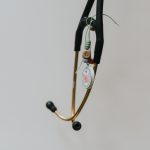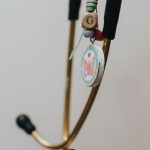Providing quarterly prescribing data to support prescriber awareness and self-reflection.
MD Snapshot-Prescribing is an interactive tool developed to encourage self-reflection, improve physicians’ awareness of prescribing practices and support high-quality patient care. It provides physicians with relevant and timely information about their opioid, opioid-naïve, benzodiazepine/z-drug and antibiotic prescribing.

What is the purpose of MD Snapshot-Prescribing?
With MD Snapshot-Prescribing, prescribers can:
- Explore long-term prescribing trends related to opioids, benzodiazepines/Z-drugs and antibiotics.
- Access tailored resources and practice improvement activities designed to support the enhancement of prescribing practices.
- Benchmark your prescribing patterns against those of your peers to gain valuable insights, and take time for self-reflection by asking, “What am I doing well?” and “Where can I improve to enhance patient care?”
- Earn Continuing Medical Education (CME) credits or leverage Snapshot data as objective evidence when participating in the Prescribing Practice Improvement Program (PPIP), supporting a practice-driven approach to continuous quality improvement (CQI).
MD Snapshot-Prescribing is:
- Not punitive: individualized prescribing information is intended to support self-reflection and may be used at the physician’s discretion to inform practice improvement efforts.
- Not a report card: percentiles represent statistical measures rather than evaluations or judgments. Peer comparisons are provided for context and should be interpreted in light of each physician’s unique practice setting and patient population.
Continuing Medical Education credits
Reviewing MD Snapshot-Prescribing qualifies for Continuing Medical Education (CME) credits.
- Prescribers can claim non-certified Mainpro+ credits under the College of Family Physicians of Canada’s assessment category. A Linking Learning exercise can also be completed for an additional 5 Mainpro+ certified credits. Visit cfpc.ca to find out more.
- Members of the Royal College of Physicians and Surgeons of Canada can claim MOC Section 3 credits. Learn more at royalcollege.ca.
Did you know a Linking Learning exercise can earn you 5 Mainpro+ certified credits?
Linking Learning exercise example: Select 5 to 10 patients and for each of them, ask yourself the following:
- Is the therapy indicated and appropriate?
- Are there safer pharmaceutical and/or non-pharmaceutical options available?
- Can I further optimize prescribing for my patient?
MD Snapshot-Prescribing’s data
Peer comparison data
Peer comparison data is included in MD Snapshot‐Prescribing to provide an additional perspective.
Physicians are assigned to the comparison group containing their primary specialty, self-reported on their annual Renewal Information Form (RIF). Physicians who belong to a Primary Care Network (PCN) can also select PCN as their specialty group to see prescribing information relative to other physicians in their network.
Peer comparison functionality applies to all three drug categories.
Data source for MD Snapshot-Prescribing
MD Snapshot-Prescribing contains patient-level prescribing data.
The Tracked Prescription Program (TPP Alberta) plays a key role in the collection and utilization of prescribing data for selected medication classes, including opioids, benzodiazepines/Z-medications and antibiotics.
The Pharmaceutical Information Network (PIN) within Alberta Netcare serves as the primary data source for both TPP Alberta and MD Snapshot-Prescribing. However, the data available through PIN has limitations, for instance, it does not include diagnostic information.
In addition to supporting MD Snapshot-Prescribing, data collected through TPP Alberta also informs the TPP antibiotic, ppioid and benzodiazepine/Z-drug Atlas.
Accessing your MD Snapshot-Prescribing
MD Snapshot–Prescribing is a quarterly report, tailored for each eligible prescribing physician. It is available through the Analytics section of your CPSA Portal
The report includes a variety of features such as long-term prescribing trends, comparator groups based on physician peer groupings, and easily accessible clinical resources, supporting informed and reflective prescribing practices.

MD Snapshot-Prescribing FAQs
To see more FAQs about Prescribing, click on All FAQs and filter by "Prescribing"
All FAQsWhat was the rationale for including antibiotics in the MD Snapshot–Prescribing report?
Antibiotics are not without risk. They can cause adverse effects, medical complications (e.g., C. difficile infections), antimicrobial resistance (AMR), negative social impacts and decreased patient quality of life. AMR means losing access to essential treatments, turning everyday infections into complicated, life-threatening illnesses.
Any use of antibiotics can contribute to AMR, but over-prescribing or inappropriate use can accelerate it. Therefore, everyone needs to do their part and use antibiotics wisely.
Over 90% of all human antimicrobial consumption occurs in the community setting. Many of these prescriptions are for viral conditions that do not require an antibiotic. MD Snapshot-Prescribing provides an opportunity to reflect on your antibiotic prescribing practices and make necessary practice changes.
What should I do if my prescribing profile includes individuals who are not my patients?
The dispensing information in PIN is entered manually at the community pharmacy level. While it’s rare, manual data input increases the risk of errors. If you notice an error on your MD Snapshot-Prescribing, please let us know by emailing AIR.Inquiries@cpsa.ca, so we can connect with the dispensing pharmacy about record correction.
What is the recommended approach for reviewing my MD Snapshot–Prescribing report?
There are several things you can do to get the most out of your prescribing profile:
- Read the whole thing. In addition to your personalized prescribing data, there is information on patients on multiple medications and/or receiving prescriptions from multiple prescribers.
- Review and reflect on your prescribing. Ask yourself what is working well in your practice and what you might need to modify. MD Snapshot‐Prescribing is a tool of self-reflection—your data is just one of many factors (patient, clinical and system) that impact your prescribing practice. Consider the information in your Snapshot within the context of your practice.
- Talk to your peers. Ask what has worked well for them and their patients. You may be able to help each other.
- Take advantage of our resources. To help you improve your practice, we have helpful links, additional information, support material and clinical resources available in our Resource bank.
- Claim Continuing Medical Education (CME) credits. Review your Prescribing Snapshot and claim uncertified Mainpro+ credits under the College of Family Physicians of Canada’s (CFPC) Assessment category. You can also complete a Linking Learning exercise to earn five Mainpro+ certified credits. Members of the Royal College of Physicians and Surgeons of Canada (RCPSC) can claim MOC Section 3 credits. For details, refer to our Continuing Medical Education document.
- Begin a Physician Practice Improvement Program (PPIP) activity. MD Snapshot-Prescribing can be used as your source of objective data in PPIP’s practice-driven quality improvement activity. More information is available on our website.
Where can I access resources to support my prescribing practices?
Good prescribing practices begin with a good education. We frequently update our tools and resources to bring you the best and latest information, support best practices and help you deliver the safest and most effective patient care possible.
MD Snapshot-Prescribing Resources
Educational resources developed by CPSA and distributed alongside the MD Snapshot–Prescribing report
All ResourcesA case study on acute rhinosinusitis (ARS): do no harm
CPSA Click to view filesAntibiotic Prescribing FAQ
CPSA Click to view filesFluoroquinolones
CPSA Click to view filesMD Snapshot-Prescribing: Antibiotic Case Studies
CPSA Click to view filesMD Snapshot-Prescribing: Are you aware of AWaRe?
CPSA Click to view filesMD Snapshot-Prescribing: Crossword Puzzle (Downloadable)
CPSA Click to view filesMD Snapshot-Prescribing: How to navigate the MD Snapshot-Prescribing antibiotics section
Click to view filesMD Snapshot-Prescribing: TPP Alberta Quiz
CPSA Click to view filesOpioid-Naïve Patients
CPSA Click to view filesPPIP using MD Snapshot-Prescribing data
CPSA Click to view filesQuestions or comments? We can help.
Phone: 780-969-4934
Toll-free: 1-800-561-3899 Ext. 4934 (in Canada)




















